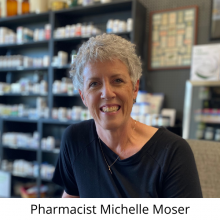Why does Low Dose Naltrexone (LDN) cause nausea and what can be done to help?
Hello, I'm on LDN for long COVID and have been since July, I have switched to sublingual taking it at night due to severe nausea that lasted for months. I'm wondering whether it is more important to take LDN immediately after eating, or to take it at the exact same time every day. And if you have any other advice for nausea, for my long COVID, my symptoms are reduced, but not my long COVID triggering nausea. So I'm experiencing nausea when I do things that would previously have triggered fatigue and other symptoms, but now don't. As a result, I'm juggling LDN and long COVID triggered nausea, a lot of the time, any advice.
We have studied issues with long COVID and LDN for several years now. And what we know is because the COVID virus can dwell in a wide variety of tissues and can affect a wide variety of tissues.
Perhaps there's some gut issues going on that need to be addressed. So you may actually find that you could do a stool test to see what is actually growing in your gut. Some pharmacies have those tests available, other providers would have those kinds of tests available.
And in doing that, that would give you very specific information so that you can reduce the inflammation and go from there. So the reason why LDN actually can cause nausea sometimes is because it will block those opiate receptors in the gut, it can slow down the gut.
When you slow down the gut food sits there longer, it feels weighty, and that can make you sick to your stomach. That can trigger nausea. So if that's the case, and we have seen where long COVID causes inflammation in the GI tract, then maybe there are some other things that can be done to do with that.
Switching to a sublingual dosage form was very smart because when you use a sublingual dosage form, that means it's actually going to be, the medication is going to be put underneath your tongue or inside the cheek. You're going to hold it there for a couple of minutes or so before you swallow it. So that way the medication can start be absorbed through the mucosal tissues, right? Through this very thin skin inside the mouth.
And in doing so, you can start the activity of the medication before you actually swallow it. So that was that was really smart. So sublingual dosage form could be a liquid. It could be a trochee and it could be a quick dissolving tablet.
So depending on what your compounding pharmacy made for you, you might even want to think about switching up that dosage form because a sublingual liquid, you may not be absorbing as much in the mucosal tissues as if you would like a quick resolve tablet or quick dissolve tablet or even a trochee.
The cool thing about trochees, they're usually like a little square or a little round maybe even rectangular piece and they can be broken up and it could be that your dose just may need to be tinkered with just a tiny bit as well.








